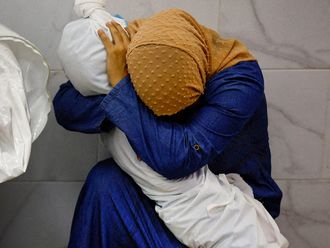Moscow: Talking of Vladimir Lenin’s body lying in state at his tomb in Red Square, Moscow, Alexei Yurchak of Berkeley University, California, referred to the embalmed human form of the revolutionary as the very embodiment of his ideology: A body-sculpture made out of the body itself.
Looking at the decadence of Russian art and culture in the post-November Revolution period, particularly its subservience to a regimented submission to Stalinist hedonism, one can say that it was somewhat like Lenin’s embalmed form: The structure was preserved, though the matter kept changing over time.
The first few years following the November 1917 revolution saw a massive positive shift taking place in favour of avant-garde theatre personalities, authors and filmmakers. Initially, Russian theatre in particular saw a lot of positive energy being infused to the stage and creativity and subjectivity were allowed to flourish in celebration of a proletarian takeover of a feudal state. However, this glasnost (openness) and perestroika (restructuring) of sorts that was sweeping through the cultural ambience in post-revolution Russia was largely a short-lived phenomenon. As the dust settled down, the exuberance of catering to a working class-inspired avant-garde sentiment was gradually replaced by conformism to the regimented and strictured proforma of a Stalinist order. All attempts to educate and indoctrinate the masses on truly Bolshevik and proletarian art and art forms soon took a backseat as addressing the demand of a very conscripted socialist realism became the order of the day.
To understand this change, one need look no further than how the roaring success of the Russian ballet as a mode of classy entertainment gave into the sombre somnolence of a decadent art form. In many ways, the problems faced by this popular dance form — and those associated with it — in post-revolution Russia were emblematic of the inherent contradictions of the mass uprising.
In Tsarist Russia, the ballet primarily belonged to the imperial theatres and they were intertwined with the Tsar’s household. Yet, the artists and performers associated with the ballet were mostly proletarian, who held a liberal view and were open to the ideals of socialism as propounded by the Bolsheviks. Ironically, in post-revolution Russia, as the ballet came to be derided as a symbol of Tsarist elitism and a part of bourgeois culture, and therefore was made the target of proletarian revisionism, the worst-affected were those ordinary souls associated with this form of entertainment who suddenly had their umbrella of state patronage blown off by the heady winds of change. This resulted in a mass exodus from the industry in the aftermath of the revolution.
Even in terms of language, the November Revolution brought about a sea change. The language used in stage performances and also in Soviet films after 1917 and beyond 1921 was steeped in the rhetoric of revolution. In this regard, it is interesting to note how the Russian Formalists had referred to Lenin’s language as being both poetic and revolutionary — all at the same time! In many ways, the language of art in post-1917 Russia served as both, a tool as well as the subject of revolutionary struggle.












